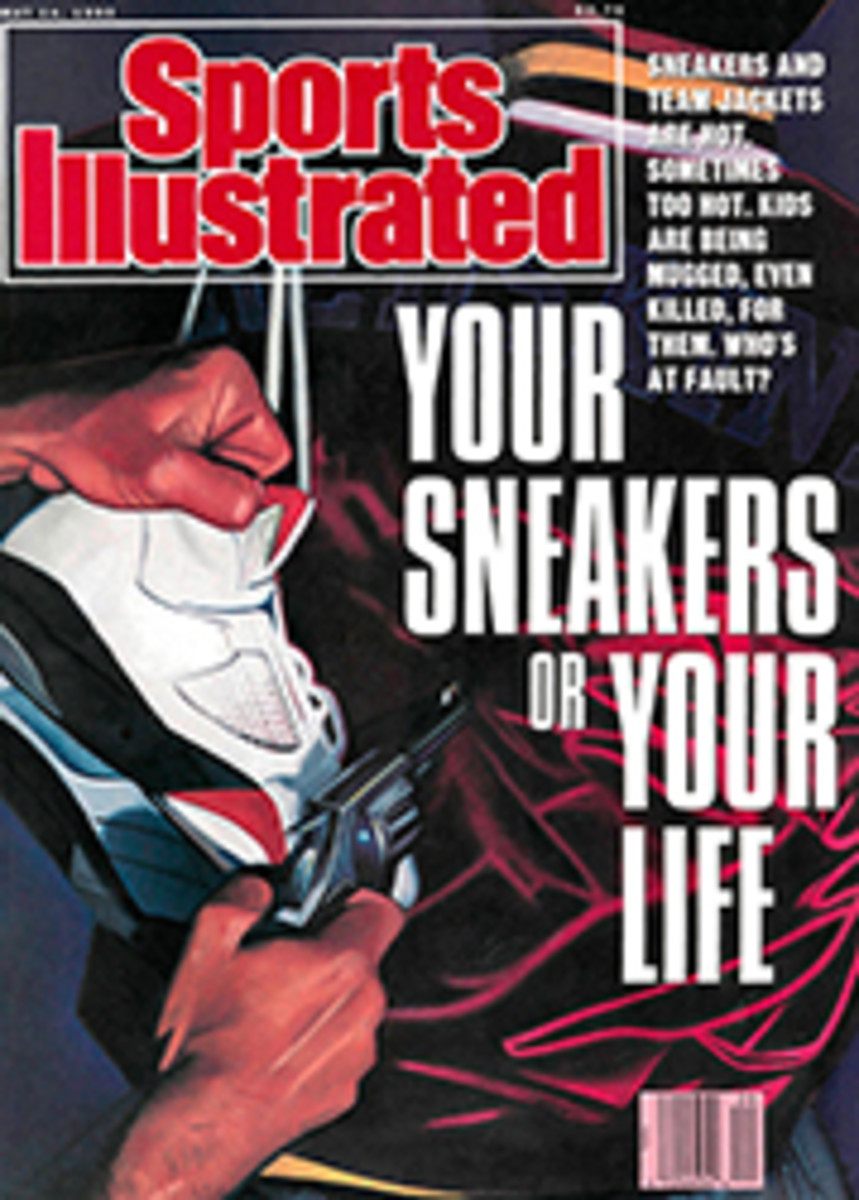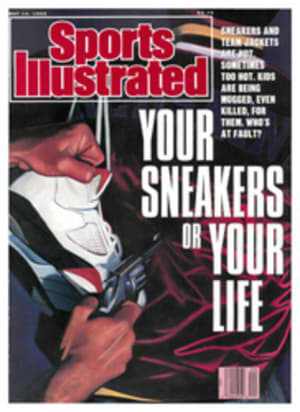
ON LAKE TAHOE THOSE BIG WHEELS KEEP ON TURNIN'
Doing his finest imitation of Captain Kirk of the starship Enterprise, a tense Jim Biller radios from the bridge to the engine room of the 63-year-old stern-wheeler, M.S. Dixie: "Scotty, I need more power. Give me everything you've got."
Deep belowdecks, Reni Owen, in engineer's bib overalls, is drenched in sweat. But when he hears Captain Biller's command, he yanks open the engine cover and jams his foot down on the throttle control. The two 300-horsepower Volvo Penta diesels that drive Dixie's twin props are already screaming, and a Detroit 671 diesel that runs the hydraulic system for the 16-foot-diameter paddle wheel is operating at what sounds to be more than maximum rpm. Even so, Owen, a former dirt-track racer who knows the value of duct tape and baling wire, gets 200 more rpm out of the starboard engine by propping the throttle open with a stick. He urges an extra 150 rpm out of the portside Volvo with his scuffed boot while his second engineer, Ray Williams, overrides the diesel's governor with a wrench. All three engines are now operating beyond their recommended redlines.
To port, the newer, larger Tahoe Queen, which has a 20-foot paddle wheel, is also surging forward. The two boats race wheel-to-wheel coming down to the wire. On the bridge of the Dixie, Captain Biller can almost feel the victory, while Andy Seymore, captain of the Tahoe Queen, is equally positive he has the battle won. The race "teams"—actually 350 guests on the Dixie and more than 450 on the Queen—holler and stomp, urging their respective entries to victory in the Great Lake Tahoe Sternwheeler Race.
Before the sixth race for these two boats, held on Memorial Day, 1989, the Nevada-registered Dixie led the series three wins to two over the California-based Tahoe Queen. But Joe Thiemann, a cruise-ship operator and the owner of the Queen, had no intention of losing again. He was racing for a cause: The Dixie has propellers the Queen does not. "The Tahoe Queen is the only authentic Mississippi paddle wheeler on Lake Tahoe," Thiemann said. "We have two Cummins engines, big 855-cubic-inch turbocharged diesels with aftercoolers. So we replaced some paddles and added another turbo-charger in order to get more horsepower."
Despite her one-race lead in the series, the Dixie, 141 feet in length, with three decks and a 28-foot beam, was never meant to be a racer. She was built in 1927 to haul cargo on the Mississippi, and she has hauled on the Red River in Texas. She wasn't destined to be a floating casino, either, which was the plan of retired river-boat captain Jim Moss when he bought her in 1947. Moss had the boat carved up into four sections and sent them by rail to Reno, then up to Lake Tahoe for reassembly. But he was denied a gaming license, and in subsequent litigation, Moss lost the boat to his creditors. Not long afterward, the Dixie mysteriously sank in Lake Tahoe. After being raised in 1949, the boat spent five years as a floating office and warehouse for a real estate business. Since 1979, the Dixie has been owned by Travel Systems Limited, a tour and recreation firm headed by Bob Kimball. She is used to take tourists around 21-mile-long Lake Tahoe.
Thiemann moved to Lake Tahoe in 1972 for the skiing, but to afford his favorite sport, he called on his heritage—his family-owned tugboat business in San Francisco—and used his pilot's license to get a job on a tour boat. He owned a number of smaller boats before he decided to commission the 500-passenger, 280-ton displacement Tahoe Queen. She was launched on Lake Tahoe in 1983. Suddenly there were two paddle wheelers plying the same waters, and it wasn't long before Thiemann challenged Kimball's Dixie to a race.
The first Battle of the Paddle took place in 1984, and the Dixie triumphed. But the Queen easily won the next two races. Then in 1987 the Dixie, sporting a larger paddle wheel and a new engine to drive it, won again and repeated in '88.
The six-mile race starts on the California-Nevada line, goes three miles into California, circles a buoy and returns to the Nevada border. A standing start is employed, which is advantageous to the Dixie, with her two fast-turning propellers. But the length of the course favors the Queen, which has more horsepower to drive her big paddle wheel.
In race No. 6, the Dixie is in the lead as we approach the turning buoy, and Captain Biller hands control of the four-foot spoked wheel to me. The wheel is made of black oak and is estimated to be 175 years old. I hold it tentatively. Biller keeps his instructions simple: Aim for the buoy. The only problem is that I am too short to sight the buoy over the bow, so he tells me to aim for a particular mountain peak and, I notice, moves a little closer to my side. My heart is pounding. Dixie, which displaces 200 tons, is tough to handle. I grip the wheel until my knuckles are white. Glancing to starboard, I see the massive Queen on my right shoulder. "All I want to do is beat the Queen," Biller tells me. "All you have to do is keep it straight." But even that is not easy. We are making less than a dozen knots, but the tension is as high as if I were driving an Indy car at 210 mph.
Kimball is also on the bridge. Come what may, he is pleased with the publicity the race generates. Seven publications have sent reporters; crews are on hand from five television stations; and a satellite feed makes the race available for news broadcasts throughout the country.
Good for the Lake Tahoe Chamber of Commerce, but I've got my hands too full to think about that now. Paddle wheelers are notoriously slow to respond to the helm, and it becomes more and more difficult for me to keep the Dixie on course as we draw closer to the buoy. Kimball says it takes a quarter of a mile to stop her. "O.K.," says Biller, "one more spoke on the wheel to the left." I can feel her coming around a bit. Small boats have surrounded us. With the engineers down below overriding the throttles to squeeze out an extra quarter knot of speed, the rpm and pressure gauges to my right mean nothing.
When we are almost on top of the buoy, Biller takes back control. He calls for his "team"—all 350 people—to step two paces to port. "This is like a motorcycle," he says, "we have to lean into the turn." As Biller reaches the buoy, he pulls back on a lever to cut the paddle to about 1,000 pounds pressure, then backs off the inside prop. He gives the Dixie hard right rudder, pulling the big wheel with all his strength, reaching across the spokes, at times crouching on the floor, grunting, until it has turned several revolutions. The boat yaws until he brings her out of the turn, at which point the team is asked to step two paces back to restore an even keel.
Kimball checks the progress of his rival around the buoy. "That's the smoothest turn they've ever made," he says with concern. The boats race side by side out of the turn. The Queen's team is chanting, cheering her on. Her bridge is overflowing with people, and a puff of black smoke rises from one of her stacks. "That's great," Biller says. "It means they're lugging their engines." But what about the smoke pouring out of the Dixie's stacks? Kimball smiles and says, "Merely pyrotechnics."
With the finish-line buoy in sight, Biller wonders if the Queen's prerace strategy—saving a surge of power for the end—will pay off. But as the Dixie passes between the finishing buoy and the officials' boat, he sighs. "By god," he says, "I think we can paint another Queen on the wheelhouse!" Like a fighter pilot, Biller records his victories for all to admire.
At the awards ceremony at Ski Run Marina, Kimball receives a handsome cup for the Dixie's eight-second victory. Thiemann is given the I Should Have Stayed In Bed Award, a stainless steel bedpan. Then Thiemann grabs the microphone. "Father Joe is a Catholic priest and was on our boat," he says. "You know priests don't lie, and Father Joe says that the Queen has won." With that, he swaps trophies with Kimball.
The brazen Thiemann raises the winner's cup and smiles broadly as he turns and heads for his boat. "Looks like for me to win these days, I have to steal the trophy right out of Kimball's arms," he says.
Thiemann still has possession of the trophy, and he is going to be able to hang on to it longer than even he expected. According to Kimball, "It might not be possible to race on Memorial Day this year because of redevelopment near the marina." But the anxious owner of the Dixie adds, "As soon as the cement dries, probably in early June, we'll be ready for the fur to fly again."
PHOTO
STEVE NELSON
A fleet of fans followed Dixie (red boat) and Tahoe Queen.
PHOTO
KEN MIRELL
Tahoe Queen's Thiemann (right) took the 1989 trophy—literally—from the top-hatted Kimball.
PHOTO
VANCE FOX
[See caption above.]
C.J. Hadley is a frequent contributor to SI but an infrequent boat skipper.

